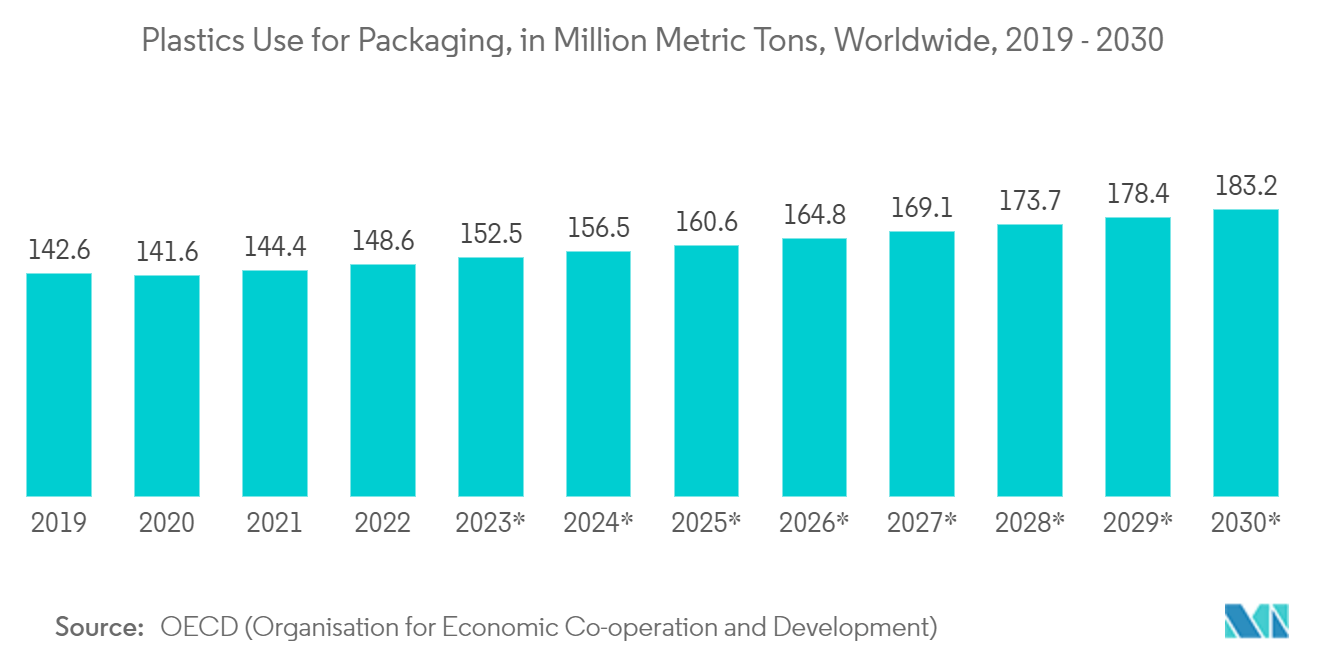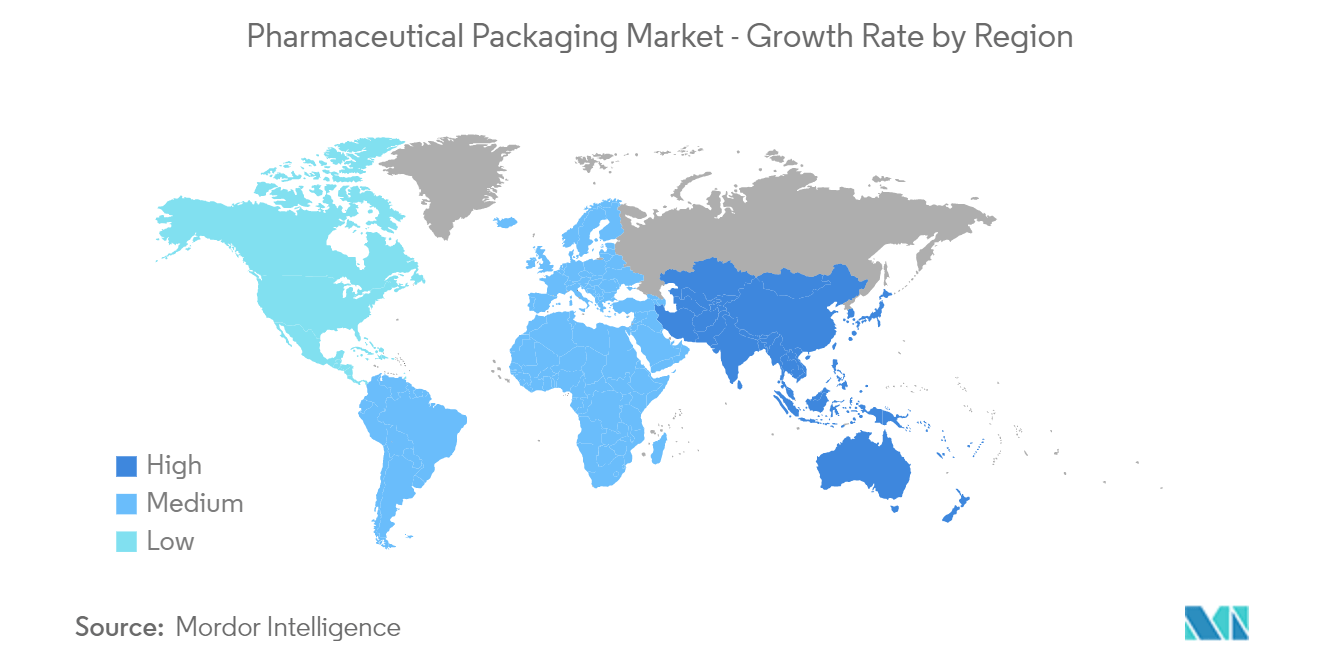Market Trends of Pharmaceutical Packaging Industry
Plastic Packaging Holds a Significant Market Share
- Plastic is one of the most popular materials for pharmaceutical packaging as it is more applicable, durable, flexible, and sustainable. Pharmaceutical packaging utilizes plastic bottles constructed from various materials, including polyvinyl chloride, polyethylene, polypropylene, and polystyrene. The industry uses transparent, durable, lightweight plastic to store and market.
- Plastics are used for packaging blister packs, sachets, prefilled syringes and inhalers, parenteral solution pouches, and bottles. Materials used in pharmaceutical packaging need to be chemically inert, have low permeability to water vapor, and are easy to handle. In addition, packaging materials come in direct contact with pharmaceuticals and biological agents and hence need to comply with strict regulations from regulatory authorities. Plastics and polymers meet these requirements; therefore, it is often used for pharmaceutical packaging.
- Bottles for pharmaceutical packaging consist of child-resistant caps and closures. The US FDA requires pharmaceutical plastic manufacturers to highlight "child-resistant packaging" on product labels for consumer evaluation. Rising demand for child-safe packaging is one of the factors driving the pharmaceutical plastic packaging market during the forecast period.
- Companies are focused on expanding their business as part of leveraging pharmaceutical packaging. For instance, in June 2022, Constantia Flexibles introduced Perpetua Alta, a new polypropylene-based mono-material for the pharmaceutical market. This mono-polymer solution replaces multi-component packaging for chemically assertive products, such as liquid and gel pharmaceutical compositions. In addition, independent certification by the German laboratory Cyclos-HTP confirms up to 96% material recovery, depending on the final material composition. Such innovations drive the plastic materials in the pharmaceutical packaging market.
- Moreover, polyvinyl chloride and PVDC (polyvinylidene chloride), commonly used as principal packaging materials, protect pharmaceutical items from oxygen and odor, moisture, water vapor transmission, contamination, and bacteria. This makes PVC and PVDC the preferred materials for blister packing. Their superior organoleptic qualities ensure that the flavor of packaged food and medications remains unaffected. PVC mono films are sunlight and UV-ray-resistant and serve as a barrier against contamination by halting the spread of germs during production and distribution over the forecast period.

Asia-Pacific to Occupy Major Share
- The robust growth of the Chinese pharmaceutical sector creates significant business opportunities for the country's pharmaceutical packaging companies. It is now becoming critical for companies to look for packaging concepts that meet emerging needs in the pharmaceutical packaging market.
- The Chinese government's policies to accelerate the transformation of the country's medical regime are expected to promote the development of the pharmaceutical packaging sector. Furthermore, China is actively upgrading its pharmaceutical packaging facilities and materials and diversifying its pharmaceutical products, bringing new opportunities to pharmaceutical packaging firms.
- The future of the pharmaceutical packaging market in Japan looks good, driven by the pharmaceutical industry's growth and improving healthcare services in developing economies. In this market, plastic, glass, paper, and aluminum foil are the main material types. Emerging trends directly impacting the dynamics of the pharmaceutical packaging industry include rising demand for eco-friendly packaging, increasing use of nano-enabled packaging, and increasing adoption of blow-fill-seal technology.
- The pharmaceutical packaging industry in India has been experiencing substantial growth for several years. Due to innovations and emerging treatments, there is room for further growth in this section of the pharma industry. The COVID-19 pandemic has brought a new awareness of the need to package and distribute products efficiently. There will be expectations to manufacture and distribute products quicker, right down to the packaging. Packaging companies will face new pressures to develop solutions to get things moving faster and increase demand.
- South Korea is one of the fastest-growing pharma regions in Asia, emerging as a critical contributor to global healthcare innovation. It has tremendously advanced new drug research and development in the last few years. Especially during the past few years, Korea has developed new drug R&D capabilities in the global pharmaceutical and biotech landscape.
- The scope of the Rest of the Asia-Pacific region includes multiple countries, such as Indonesia, Australia, Singapore, Thailand, and Malaysia. The market is driven by the surge of international partnerships, biosimilars, an expansion in the export of finished formulations, and a robust generics market.

